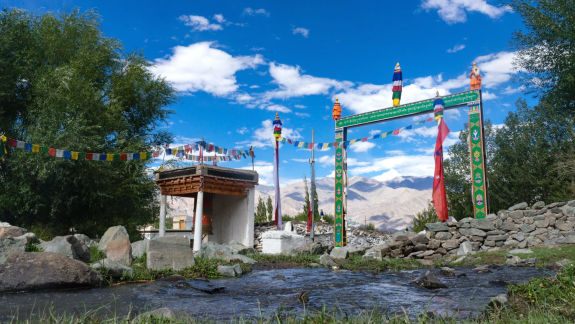Witness rituals at the Lhakchung
DAILY MORNINGS AND EVENINGS
The Stok Palace has a buddhist temple on the upper-most floor of the palace. Guests staying at the Stok Palace Heritage Hotel have privileged access to the Lhakchung Temple. The resident monk here performs daily prayers and rituals as part of his duties. Guests are welcome to be quiet observers to enchanting routine.










